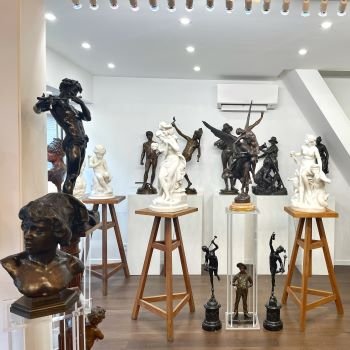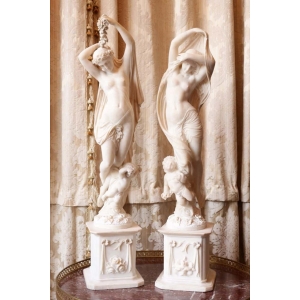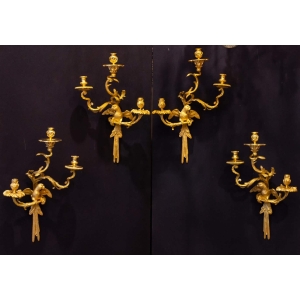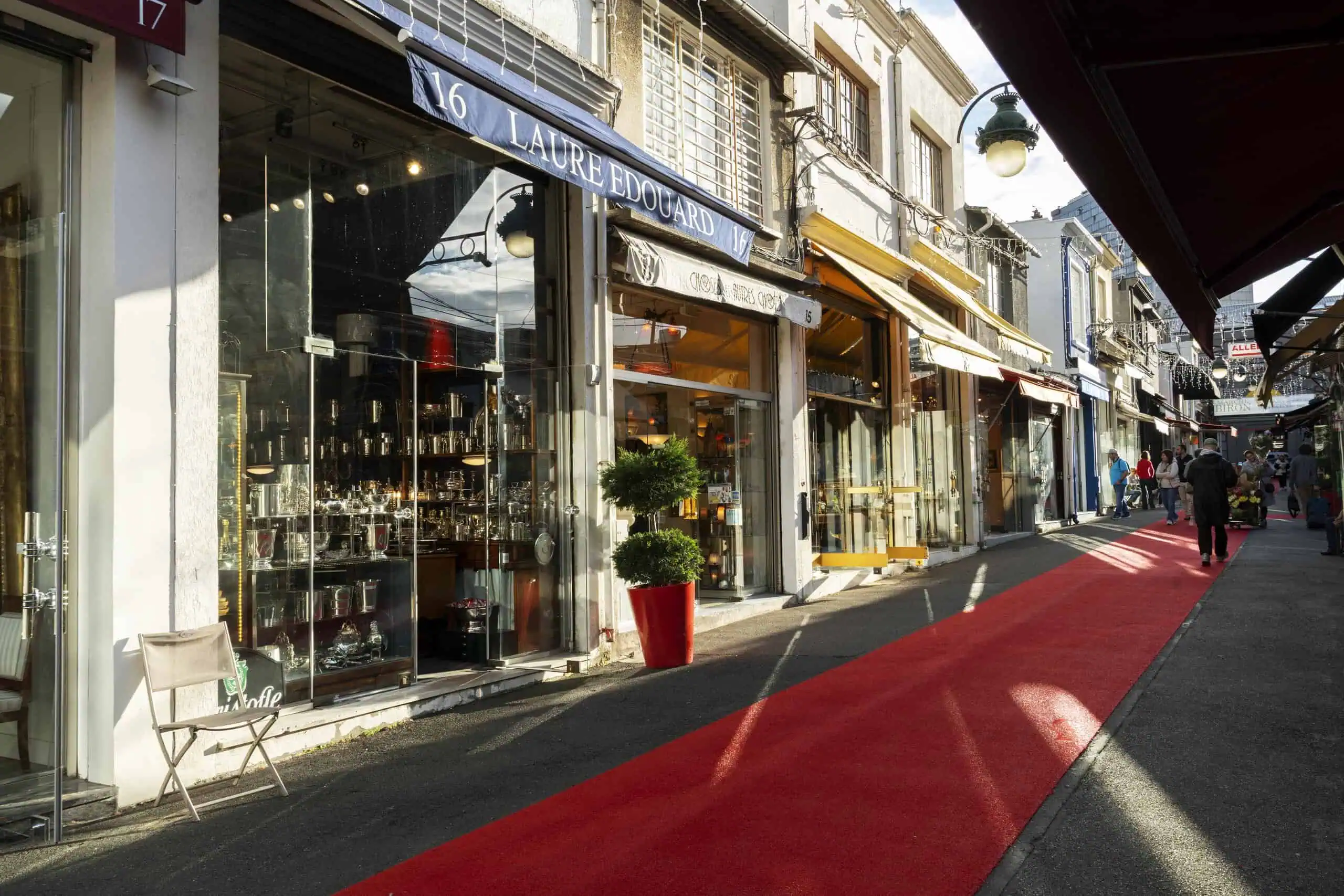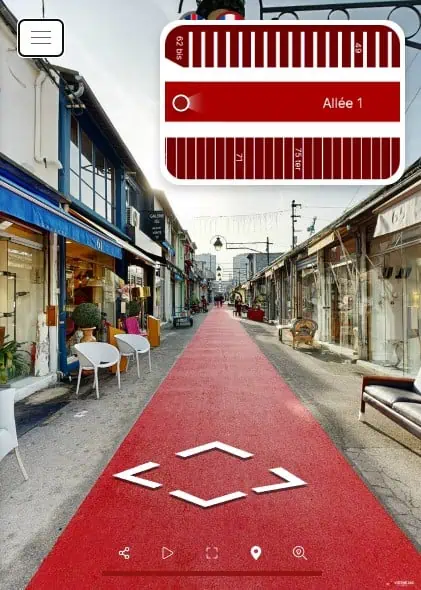Épreuve en bronze , à patine brune nuancée représentant un sanglier courant , par Irénée Rochard (1906-1984) .
Le sanglier figure avec une allure imposante , un corps trapu , une tête massive , de longues défenses et de solides sabots .
Bronze signé “I.ROCHARD” , en creux , sur la terrasse naturaliste , richement ciselée .
Bronze d’édition ancienne , période XX ème siècle , Art-Déco .
Très bon état de conservation et de patine .
Dimensions : 17 cm x 23 cm
Irénée Félix René Rochard (1906-1984)
Irénée Rochard est un sculpteur animalier français , né en janvier 1906 à Villefranche-sur-Saône en Auvergne-Rhône-Alpes .
Issu d’une famille d’artistes , il s’oriente très tôt vers cette voie .
De 1924 à 1928 , Irénée Rochard étudie aux écoles des Beaux-Arts et des Arts Décoratifs .
En 1938 , il rejoint la Société des artistes français et obtient plusieurs prix et distinctions pour ses sculptures .
Durant l’entre-deux-guerres , le jeune artiste fait la rencontre de François Pompom , d’ Édouard Sandoz et d’autres artistes du milieu de la sculpture animalière .
Irénée Rochard se rend alors compte que travailler sur cette thématique lui plaît et décide de se lancer dans cette pratique .
Si Irénée Rochard apprécie tant la sculpture des animaux , c’est parce qu’elle lui permet de leur « rendre hommage » .
Son objectif est de montrer leur personnalité et de faire ressortir les aspects les plus importants de leur personnalité , leur douceur ou leur férocité .
Le réalisme de ses sculptures est d’ailleurs le résultat de très grandes capacités d’observation pour l’époque .
Sa rigueur et l’harmonie de sa production l’inscrivent dans un style Art – Déco .
À l’époque , le sculpteur travaille essentiellement à partir du bronze , mais va également créer des figurines en céramique , en bois , en granit ou encore , en marbre .
Son œuvre s’est toujours démarquée de celle des autres grâce à son style de facture moderne , à l’élégance et la grâce de ses formes .
Cette esthétique lui a été inspirée par le travail de François Pompon et d’Édouard-Marcel Sandoz .
Irénée Rochard va également dédier une partie de sa carrière à une collaboration avec le sculpteur italien Ugo Ciprani .
Dès la fin de ses études , son travail est apprécié du public et de la critique .
Les dizaines de récompenses qu’il reçoit au cours de sa carrière dont le Prix Taylor (1960) , et le Prix de l’Institut des Beaux-Arts (1973) , démontrent l’intérêt qui était porté à son travail.
Le sculpteur décède en janvier 1984 à Paris .
Running Boar , Irénée Félix René Rochard (1906-1984)
Bronze print , with nuanced brown patina representing a running wild boar , by Irénée Rochard (1906-1984) .
The wild boar has an imposing appearance , a stocky body , a massive head , long tusks and strong hooves .
Bronze signed “I.ROCHARD” , hollow , on the naturalist terrace , richly chiseled .
Old edition bronze , 20th century period , Art-Deco .
Very good state of conservation and patina .
Sizes : 17 cm x 23 cm
Irénée Félix René Rochard (1906-1984)
Irénée Rochard is a French animal sculptor , born in January 1906 in Villefranche-sur-Saône in Auvergne-Rhône – Alpes .
Coming from a family of artists , he turned to this path very early .
From 1924 to 1928 , Irénée Rochard studied at the Schools of Fine Arts and Decorative Arts .
In 1938 , Irénée Rochard joined the Society of French Artists and obtained several prizes and distinctions for his sculptures .
During the inter-war period , the young artist met François Pompom , Édouard Sandoz and other artists from the world of animal sculpture .
Irénée Rochard then realizes that working on this theme appeals to him and decides to embark on this practice .
If Irénée Rochard appreciates the sculpture of animals so much , it is because it allows him to “ pay homage ” to them .
Its objective is to show their personality and bring out the most important aspects of their personality , their softness or their fierceness .
The realism of his sculptures is also the result of very great observation skills for the time .
Its rigor and the harmony of its production place it in an Art Deco style .
At the time , the sculptor worked mainly from bronze , but also created figurines in ceramic , wood, granite or even marble .
His work has always stood out from that of others thanks to its modern style and the elegance and grace of its forms .
This aesthetic was inspired by the work of François Pompon and Édouard-Marcel Sandoz .
Irénée Rochard will also dedicate part of his career to a collaboration with the Italian sculptor Ugo Ciprani .
From the end of his studies , his work was appreciated by the public and the critics .
The dozens of awards he received during his career , including the Taylor Prize (1960) and the Institut des Beaux-Arts Prize (1973) , demonstrate the interest shown in his work .
The sculptor died in January 1984 in Paris .














